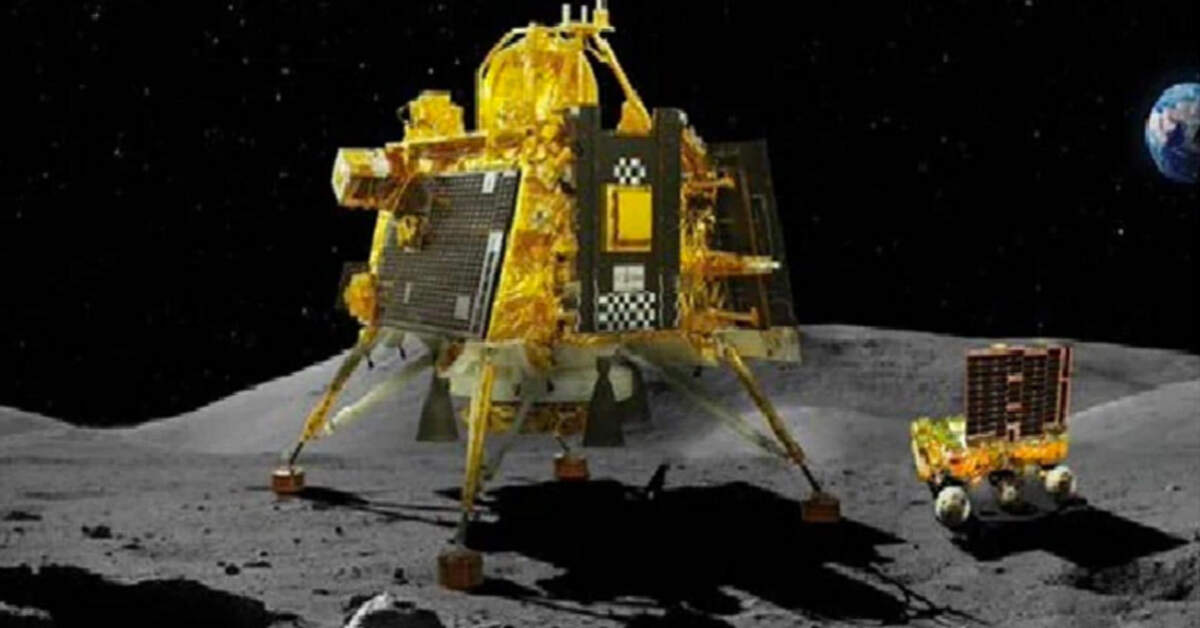Eye News Desk
ISRO says Moon Lander, Rover in sleep mode

Chandrayaan-3's lander Vikram will go to sleep mode on the moon, India's space agency ISRO said today, hours after announcing that it had exceeded its mission by "landing on moon, again".
"Vikram Lander is set into sleep mode around 08:00 Hrs. IST today. Prior to that, in-situ experiments by ChaSTE, RAMBHA-LP and ILSA payloads are performed at the new location. The data collected is received at the Earth. Payloads are now switched off. Lander receivers are kept ON. Vikram will fall asleep next to Pragyan once the solar power is depleted and the battery is drained. Hoping for their awakening, around September 22, 2023," ISRO (Indian Space Research Organisation) posted on X, formerly Twitter.
The rover Pragyaan, which rolled out of the lander upon Chandrayaan's moon landing, is already in sleep mode. In an earlier post today, ISRO shared that the lander, Vikram, had made a touchdown on the lonar surface again.
"Vikram Lander has exceeded Chandrayaan-3 mission objectives and successfully completed a hop experiment. On command, it fired the engines, elevated itself by about 40 cm as expected and landed safely at a distance of 30 - 40 cm away," said the post.
A video shared on the post showed the lander raking up lunar dust after the hop. ISRO said the rare hop signalled that all systems were normal and healthy and was a good sign for future missions.
Vikram, which had been sitting at Shiv Shakti point, was "woken up" and on commands from ISRO, was made to take off vertically and then land 30-40 centimeters away. The Vikram rose by about 40 cm and landed close by.
After the Vikram's systems deployed ramp, equipment folded back and redeployed successfully after the experiment," it said.
Last week, the Chandrayaan-3 mission's Pragyan rover was "set into Sleep mode" but with batteries charged and receiver on.
"Hoping for a successful awakening for another set of assignments. Else, it will forever stay there as India's lunar ambassador," the space agency said.
With Chandrayaan-3's textbook moon landing on August 23, India became the first country to land on the lunar South Pole. India also became the fourth country after the US, China, and Russia to successfully land on the moon's surface.
After the historic landing, the Lander (Vikram) and the rover (Pragyan) performed different tasks on the lunar surface, including detecting the presence of sulphur and recording relative temperature. Upon landing, the lander and the rover were to operate for one lunar day. A day on the Moon equals 14 days on Earth.
The lander carried the Chandra's Surface Thermophysical Experiment (ChaSTE) to measure surface thermal properties, the Instrument for Lunar Seismic Activity (ILSA) to measure seismicity around the landing site, the Radio Anatomy of Moon Bound Hypersensitive ionosphere and Atmosphere (RAMBHA) to study the gas and plasma environment, and a passive laser retroreflector array provided by NASA for lunar ranging studies.
Read More
- 32 megapixel camera new phone Tecno Spark 10 Pro
- Google Bard now in Bangladesh
- Samsung Galaxy A54 5G: A perfect price fit!
- Tottering from Twitter to Threads
- Elon Musk`s SpaceX hires 14-year-old Bangladeshi-American Kairan
- Refreshing only increases the speed of the computer?
- Twitter lost a huge number of subscribers
- boAt products now officially available in Bangladesh
- The Godfather of AI quits Google; warns of impending danger
- 4 websites to track Cyclone Mocha in real-time






























